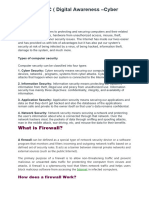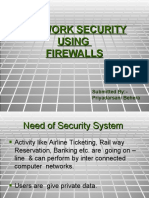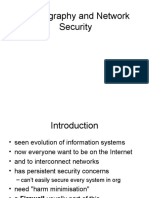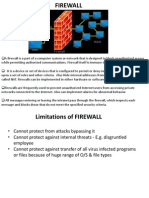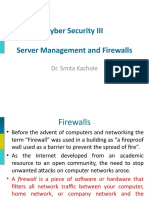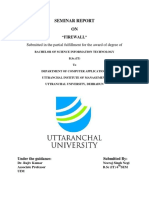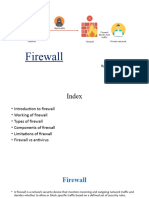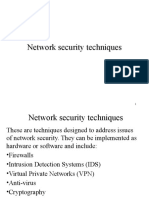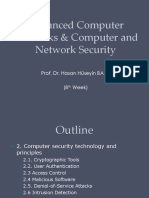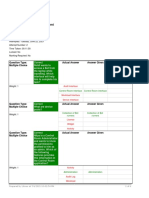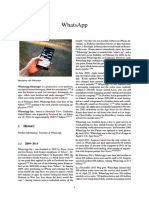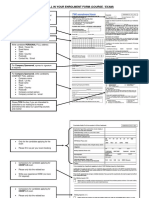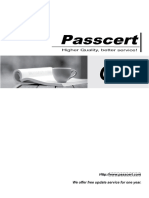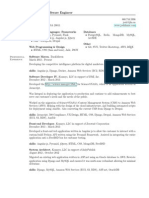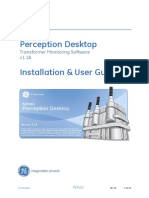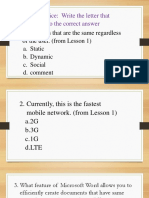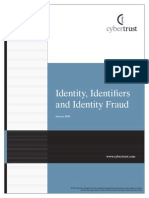0% found this document useful (0 votes)
7 views27 pagesDaffodil International University Dept. of CSE Information Security
The document discusses personal device security, focusing on antivirus software and firewalls. It explains how antivirus software detects and removes malware using various detection techniques, while firewalls monitor and control network traffic based on security rules. Additionally, it outlines different types of firewalls and their functionalities, highlighting the importance of both antivirus and firewall in protecting devices from cyber threats.
Uploaded by
Mominul IslamCopyright
© © All Rights Reserved
We take content rights seriously. If you suspect this is your content, claim it here.
Available Formats
Download as PPTX, PDF, TXT or read online on Scribd
0% found this document useful (0 votes)
7 views27 pagesDaffodil International University Dept. of CSE Information Security
The document discusses personal device security, focusing on antivirus software and firewalls. It explains how antivirus software detects and removes malware using various detection techniques, while firewalls monitor and control network traffic based on security rules. Additionally, it outlines different types of firewalls and their functionalities, highlighting the importance of both antivirus and firewall in protecting devices from cyber threats.
Uploaded by
Mominul IslamCopyright
© © All Rights Reserved
We take content rights seriously. If you suspect this is your content, claim it here.
Available Formats
Download as PPTX, PDF, TXT or read online on Scribd
/ 27






